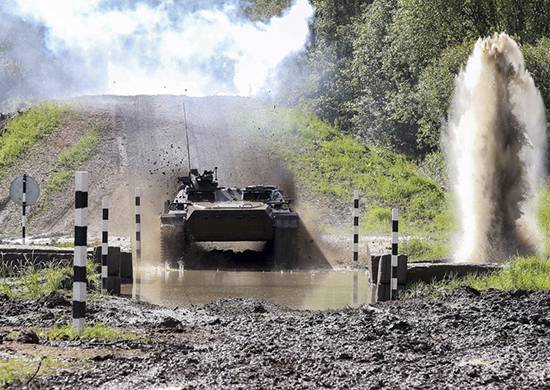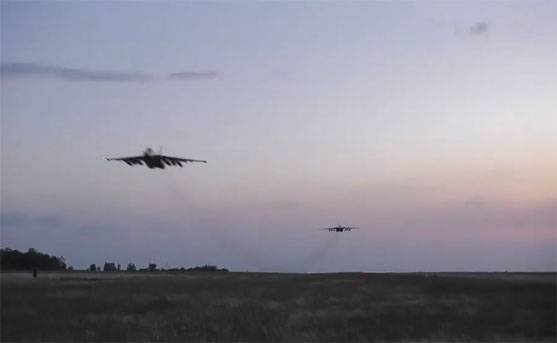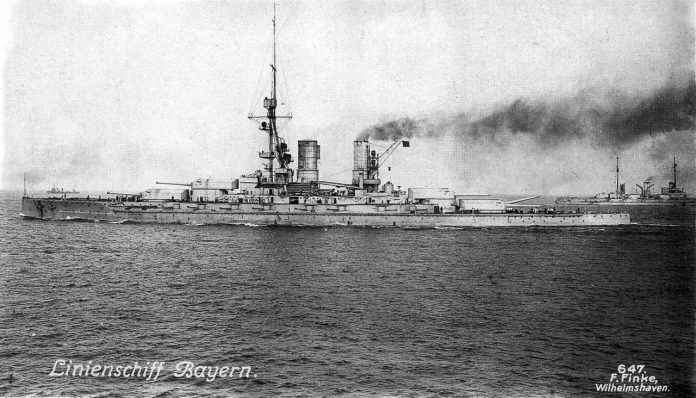
Design and housing features
Need to say, that the design of the Bayern-class battleships posed an extremely difficult task for the German shipbuilders to link together the "horse and the quivering doe".
On the one hand followed, possibly, stick to the size of the ships of the previous type, battleships of the "Koenig" class, and this requirement, surprisingly, was perfectly justified. The thing is, that relatively recently the German fleet has completed very expensive work to deepen and widen the fairways, anchorages, etc., including the Kiel Canal, but all this was designed for battleships of geometrical dimensions "König". In this way, a significant excess of these sizes would lead to restrictions on the bases for new battleships. Let's not forget that, what for A. von Tirpitz, it was extremely important not to inflate the cost of battleships beyond the necessary - she already, need to say, impressed. In this way, it would be ideal to fit the new battleship into the dimensions of "König" with a minimum increase in displacement.
But on the other side, the twin-turret of 380-mm guns was approximately twice as heavy as the twin-turret 305-mm, and the muzzle energy of a fifteen-inch cannon is about 62% exceeded that of the twelve-inch. Respectively, and the recoil was much more serious. In other words, replacing five 305-mm towers with four 380-mm towers required an increase in displacement, and in addition, installing significantly better reinforcements, which would not allow the body to deform from the firing of main battery guns. And with all this, in no case could you sacrifice protection!
Generally, perhaps, we can say that, that the German shipbuilders coped with their task if not excellently, then on a solid four. The newest German superdreadnoughts were only slightly larger than the battleships of the "Koenig" class: the Bayern building was on 4,7 m longer and by 0,5 m wider, the height of the board exceeded that of the "Konig" by 0,53 m. At the same time, the normal displacement increased by 2 750 t and amounted to 28 530 m - and this was achieved due to the more complete contours of the "Bayern", the coefficient of its overall completeness was 0,623, while the similar indicator of "König" was 0,592.
As for the strength of the case, then it was reinforced by the installation of two longitudinal bulkheads, passing throughout the citadel. At the ends, they were the load-bearing element of the turret structures., and in the middle of the building, the machine and boiler rooms were divided into compartments, and, together with two armored bulkheads, provide resistance to body bending on the wave. In the same time, they, together with the transverse bulkheads of the turret structures, represented a rigid base for the perception of the recoil of the main battery guns.
The rest of the hull design was created on the basis of typical solutions of the Kaiser fleet, but - with all possible lightening of the scales. The latter became the subject of criticism of later researchers - so, the famous specialist in the Kaiser's shipbuilding Erwin Strobush believed, that Bayern and Baden hulls raise concerns about the strength of the main connections.
The anti-torpedo protection of German superdreadnoughts was quite interesting.. These ships had a double bottom only at the bottom level., but there, where it passed into the sides and up to the lower edge of the armor belt, there was nothing like that - only the side sheathing. However, behind the skin at a distance 2,1 m (at the extremities this distance was less) there was a longitudinal bulkhead, made of thick shipbuilding steel 8 mm. Her bottom rested on a double bottom, top - closed with the bevel of the armored deck. The idea was, what a torpedo, landed on board, punched it easily enough, but then the energy of the expanding gases was spent on filling the empty compartment, what should have weakened the force of the explosion.
Well, the main defense was located even further - at a distance 1,85 m from the bulkhead described above was located the second, made of 50 mm armor. The space between them was used as coal bunkers, which created an additional "line of defense" - coal "slowed down" fragments of the skin and 8-mm bulkheads, if the latter is also destroyed by an explosion, reducing the chances of breakdown of the PTZ armor bulkhead. At the same time, the Germans believed, what 0,9 m of coal provide the same protection, like a steel bulkhead 25 mm. anticipated, that with completely filled coal pits and undamaged watertight bulkheads, a torpedo hitting the center of the Bayern's hull would lead to a 1,5 degrees.
In this way, the anti-torpedo protection of Bayern-class battleships was very powerful, but it also had a "weak link" - these are the premises of traverse torpedo tubes of 600-mm caliber. There was no way they could find a place in the citadel, so they were housed outside of it, representing large, weakly protected compartments. Underwater damage in these areas automatically led to extensive flooding, since, due to the design features of the torpedo tubes and the equipment serving them, it was not possible to separate these compartments with watertight bulkheads.
A good illustration of this weakness was the detonation of Russian mines on the battleships Bayern and Grosser Kurfürst during Operation Albion.. "Grosser Kurfürst" got a hole in the middle of the hull, within PTZ, why did you accept 300 tons of water, and this is his troubles, generally, ended. At the same time, "Bayern" was blown up by absolutely the same mine in the area of the bow compartment of traverse torpedo tubes - outside the citadel and its PTZ. Russian mine contained 115 kg of TNT, which in itself is not so much, however, its destructive energy initiated an explosion 12 compressed air cylinders, as a result, the bulkheads were destroyed and flooded not only the compartment of the traverse torpedo tubes, but also the compartment of the bow torpedo tube located nearby.
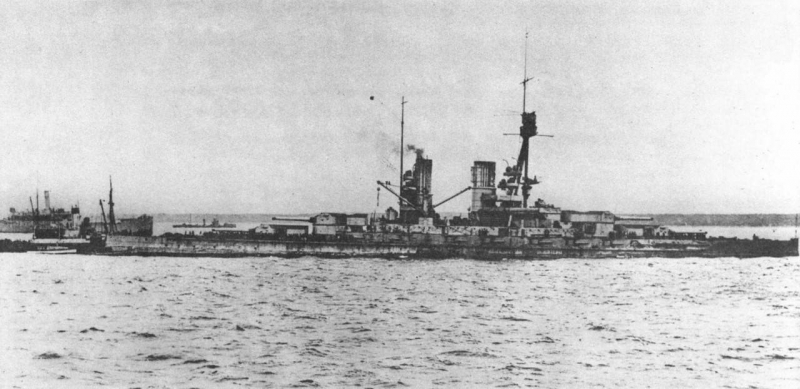 «Bayern» after being blown up by a mine, 1917 g.
«Bayern» after being blown up by a mine, 1917 g.
The battleship took 1000 tons of water, and had to level it off by counter-flooding of the aft compartments - taking into account the latter, it received before 1500 tons of water. Bayern's main systems continued to function, and he could fire from main battery guns (which immediately proved, suppressing the Russian battery No. 34 with fire), in this regard, the ship remained combat-ready, however, the damage he received led to a critical loss of speed.
After the detonation, the battleship went at the smallest speed to the Tagalakht Bay, where anchored for, to put a patch on a hole, and also bolster bulkheads, and it was all done, but subsequent attempts to pump out the water were unsuccessful. Then the battleships of the 3rd squadron, including Bayern and Grosser Kurfürst, went to sea - they followed to Puzig for bunkering, where the "wounded" were supposed to go to be repaired in Kiel.
The ships gave only 11 knots, but it turned out, that Bayern cannot stand even this - through 1 time 20 minutes after the start of movement on it were forced to slow down. Water flowed back into the nasal compartments, and the main bulkhead, water-resistant, bent over 20 mm. If she couldn't stand, then the spread of water inside the ship could take on a completely uncontrollable character.
However, reducing the stroke did not give any effect - soon it had to be reduced again, and then, three hours after the start of the hike, Bayern was forced to stop completely. In the end it became clear to the command, that they may not bring the superdreadnought to Puzig and it was decided to return it to Tagalakht Bay, and on the way back "Bayern" could not go faster 4 knots. A long renovation awaited him here..
For two weeks the crew was engaged in reinforcing the bulkheads - wooden blocks were laid on top of all seams, with elastic pad, which were reinforced with numerous struts and wedges. The openings in the bulkheads were filled with wedges and filled with cement, etc.. And only after that did the battleship risk to be re-put to sea., while at the transition, the ship barely held 7-10 knots, the plaster was ripped off, water poured into the partially drained compartments again, but the ship commander still decided not to interrupt the campaign, since the reinforced bulkheads held up well, and on the final section of the route even ventured to develop 13 knots.
All of the above does not inspire much optimism regarding the strength of Bayern's hull structures. certainly, in Operation Albion, in the conditions of complete domination of the German fleet, he was able to provide the most "preferential" conditions for the elimination of damage, but there is no doubt, what, if the ship suffered such damage in a battle with the British fleet, this would be the cause of his death.
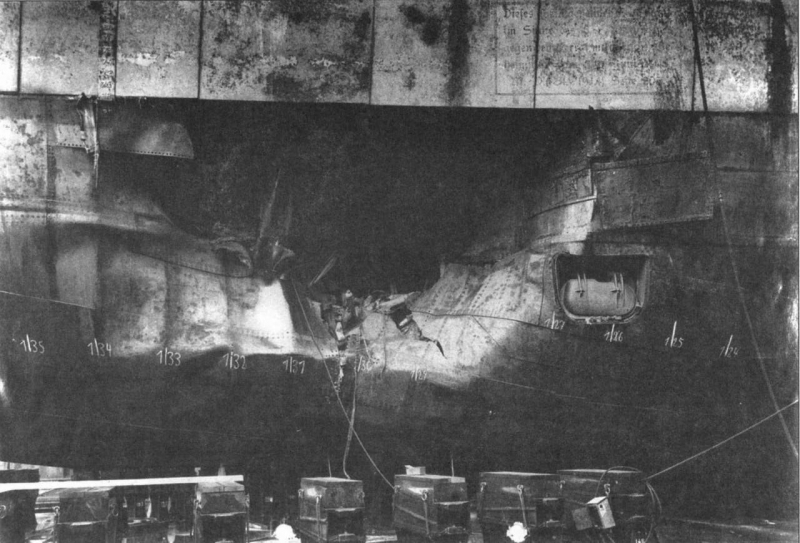 «Bayern» in the dock. Mine blast site.
«Bayern» in the dock. Mine blast site.
Yet again, it is interesting to compare the state of "Bayern" and "Lyuttsov", who received similar damage in the Battle of Jutland: as a result of two hits of 305-mm shells from the "Invincible", or, may be, Inflexible, all its bow compartments in front of the bow turret of the main battery were flooded. The ship took order 2000 tons of water, and had to briefly reduce the speed to 3 knots, but then recovered and could give 15 nodes for a long time. Finally, it was this damage that led to the death of "Luttsov", but, reading descriptions, does not leave the thought of, that under such conditions Bayern would have held out even less.
Let us conclude the description of the design features of Bayern-class battleships with one very extravagant solution.. The thing is, that on the superdreadnoughts of the Second Reich, the Germans did not find the strength to abandon the much "necessary" combat means, like ... ram stem. This was done at the direct insistence of A. von Tirpitz, considered, that the presence of a battering ram will give the ship's crew a sense of confidence "in a junkyard". One can only wonder that, how such archaic views coexisted in one person, along with advanced views on the use of long-range naval artillery and other innovations.
Power plant
Power plant (EU) battleships of the "Bayern" type was created according to the traditional for the German fleet three-shaft scheme, which the Germans have widely used on their ships since the 90s of the 19th century. Initially, the use of three cars was dictated by the desire to reduce their height., in comparison with the "two-shaft" scheme, but later the Germans saw other advantages of the three shafts. Less vibration, better handling, wherein, in case of failure of one of the machines, the ship only lost a third, and not half the capacity of your power plant.
Interestingly, for a while the Germans counted on, that driving under a medium vehicle alone will increase the range, but soon saw, that this idea doesn't work. Nevertheless, other of the above advantages made the three-shaft power plant traditional for German heavy ships.
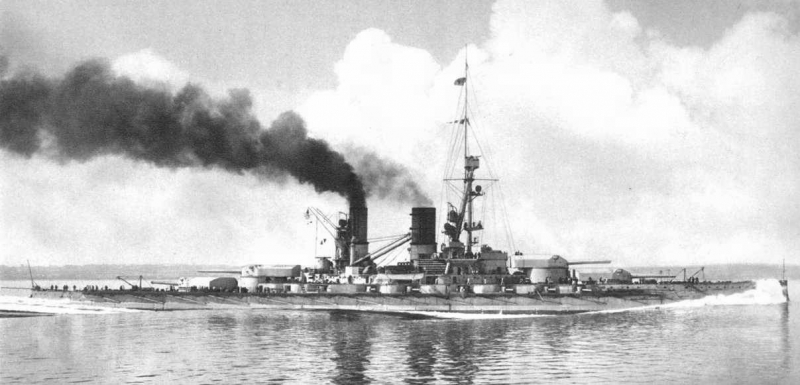 «Bayern» on sea trials
«Bayern» on sea trials
It was originally planned, that the "side" screws will rotate steam turbines, and the middle shaft will be driven by a powerful diesel. But this idea was abandoned at the design stage - the solution with a diesel engine was more expensive, and most importantly, its development progress has been much slower than initial expectations.
As a result, Bayern and Baden received three steam turbine units with Parsons turbines. Steam was generated for them 14 boilers of the Schultz-Thornycroft system, while three of them worked on oil, and the rest had mixed heating, but also could only work on coal or oil. The power of the mechanisms was supposed to be 35 000 hp, the speed should have reached 21 with.
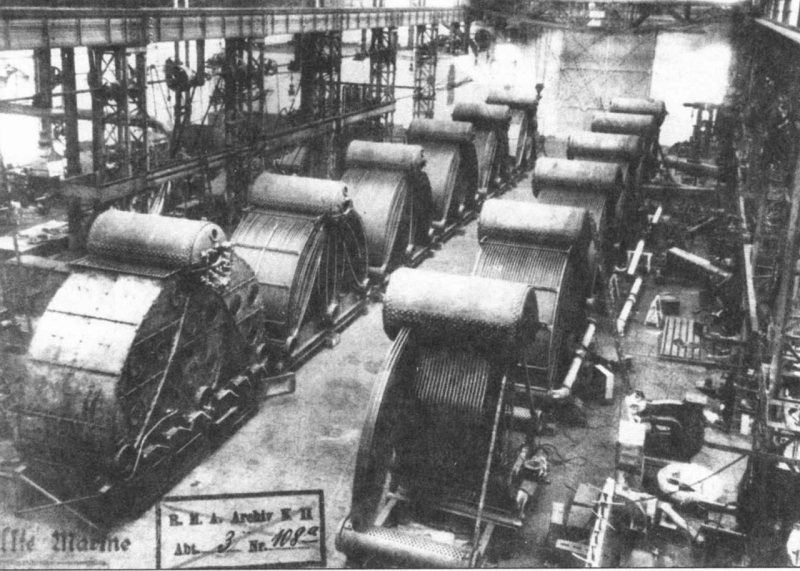 Boilers of German battleships type «Bayern» at the factory
Boilers of German battleships type «Bayern» at the factory
Unfortunately, sea trials of "Bayern" and "Baden" were carried out according to an abbreviated program - in connection with wartime. Both of these ships went out to the measured mile in displacement, more than normal, at the same time, they were forced to undergo tests on a shallow measuring mile in the Belt, where the depth of the sea did not exceed 35 m. Nevertheless, Bayern developed power during a six-hour run 37 430 hp, while the average speed was 21,5 with., and tests at maximum speed showed 22 node with a power 55 970 HP. "Baden" showed about the same performance, developing power in 54 113 HP. and speed 22,086 with., with a displacement 30 780 t, ie 2 250 t exceeding normal.
The calculations of German specialists showed, what, if both battleships were tested in their normal displacement and in deep water, their speed would be 22,8 host. Noteworthy is the relatively small increase in speed, despite, that the power of the mechanisms turned out to be much higher than planned. Bayerne-class battleships turned out to be slower than their 305-mm predecessors: "Kaisers" developed speed up to 23,6 with., "Kenigi" practically did not yield to them, and "Grosser Kurfürst", looks like, and set a record at all, for a short time, developing speed in the Battle of Jutland 24 host.
At the same time, the Bayerns did not even reach 23 knots, and the reason for this was the more complete contours of the hull, which the German shipbuilders were forced to resort to. The British subsequently studied in great detail the battleships of the "Bayern", came to a fair conclusion, that their hulls were optimized for speed in 21 node, and exceeding this speed required a sharp increase in the power of the power plant.
What can be said about the speed of "Bayerns"? Beyond any doubt, 21 the node was chosen quite intelligently and deliberately, within the framework of the concept of dividing the main forces of the fleet into "main forces" and "high-speed wing". Bayerns were classic battleships of the main forces, which extra speed would be superfluous, as it would require weakening weapons or armor, but would not give anything tactically, since the "Bayrns" were supposed to operate as part of a line of slower ships. AND, yet again, the increase in body fullness was due to more than good reasons.
but alas, as usual, reality has made the most significant adjustments to the excellent logical theoretical constructions. Need to say, that "Bayern" did not have time for the Battle of Jutland quite a bit: by that time, his crew had not yet completed full combat training, therefore the battleship was listed as a semi-combatant unit, which should have been sent into battle unless in the event of a direct assault on the German coast by the battleships of the Grand Fleet.
Then, after Jutland, the battleship has gained full combat capability, and the German command became somewhat more optimistic about the possible outcome of the confrontation between the line forces of Germany and England in open battle, why the plan for a new large-scale operation was conceived. June, July and early August were spent on the restoration of ships damaged in the Battle of Jutland, and then the hochseeflotte went to sea, and "Bayern" - on its first military campaign. but alas, completely wrong quality, to which his admirals and designers intended.
19 August 1916 g. battleship "Bayern" went to sea ... as part of the 1st reconnaissance group, that is, being ranked among the battle cruisers! Usually mentioned, that the main reason for such a strange decision was the absence of "Derflinger" and "Seidlitz", that, having received severe injuries in Jutland, just did not have time to return to duty with the beginning of the operation. But it cannot be ruled out that, that the Germans, colliding on battlecruisers with superior Queen Elizabeth-class battleships, combining high speed and 381-mm guns, did not want to repeat this experience at all and therefore included the battleship in the vanguard, who could fight them on equal terms.
This latest version is also supported by, what, in addition to Bayern, 1-1st reconnaissance group, which at that time had only two battle cruisers "Von der Tann" and "Moltke", was also reinforced by the "Margrave" and "Grosser Kurfürst", which generally speaking, were faster than "Bayern". And if speed were a priority, then it could well be transferred to the 1st reconnaissance group "instead of the three above-mentioned battleships, three ships of the" König "type or the" Kaiser "type - such a connection would be faster. Nevertheless, “Bayern” was chosen - the slowest, but also the most powerful of 3 last series of German dreadnoughts. "Baden" did not participate in this campaign - at the same time, when the hochseeflotte went to sea, it was only presented for acceptance tests. However, and Bayern did not get a chance to excel - no collisions with the British fleet occurred.
But back to the technical characteristics of battleships of this type.. The total fuel supply was 3 560 tons of coal and 620 t. oil. The travel range was calculated to be 5 000 miles on 12 sites, 4 485 on 15 with., 3 740 (17 with.) and 2 390 miles on 21 with. But here one important circumstance arose.. As we have said previously, the Germans used coal as a constructive protection of the ship - they were filled with narrow (1,85 m) and long coal pits, running along the entire citadel. As a result, approximately 1200 tons of coal were placed not along the boiler rooms, from where it would be relatively easy to supply them to the boilers, and in the area of turbines and 380-mm turrets of the main caliber.
Using these 1200 t., of course, led to a known weakening of the anti-torpedo protection, but the problem was not only and not so much, and in that, that extracting these reserves from narrow bunkers was extremely difficult, completely impossible in battle and very difficult at sea. It was necessary to first remove the coal from the bunkers, then drag them to the bins, located next to the boiler rooms, and load them there - all this was very labor intensive and led to severe fatigue of the crew, hardly acceptable in combat conditions, when at any time a collision with enemy ships could be expected. In this way, these 1200 tons of coal became an emergency reserve, which would be very difficult to use, and the above range was mostly theoretical.
The size of the crew was different for peacetime and for wartime. According to the timetable, in wartime, the crew of the Bayern was 1276 pers., and "Badena" - 1393 pers., the difference is due to, that "Baden" was created as the flagship battleship of Hochseeflotte, and as such, had additional premises to accommodate the fleet and its headquarters. Need to say, what later, when the battleship was surrendered to Great Britain, the British did not like the officers' cabins, no crew quarters, and only the admiral's salon with an area of 60 m. on "Baden".
This concludes the description. «Bayern» and «Badena» and move on to American «standard» linkoram.
To be continued…








